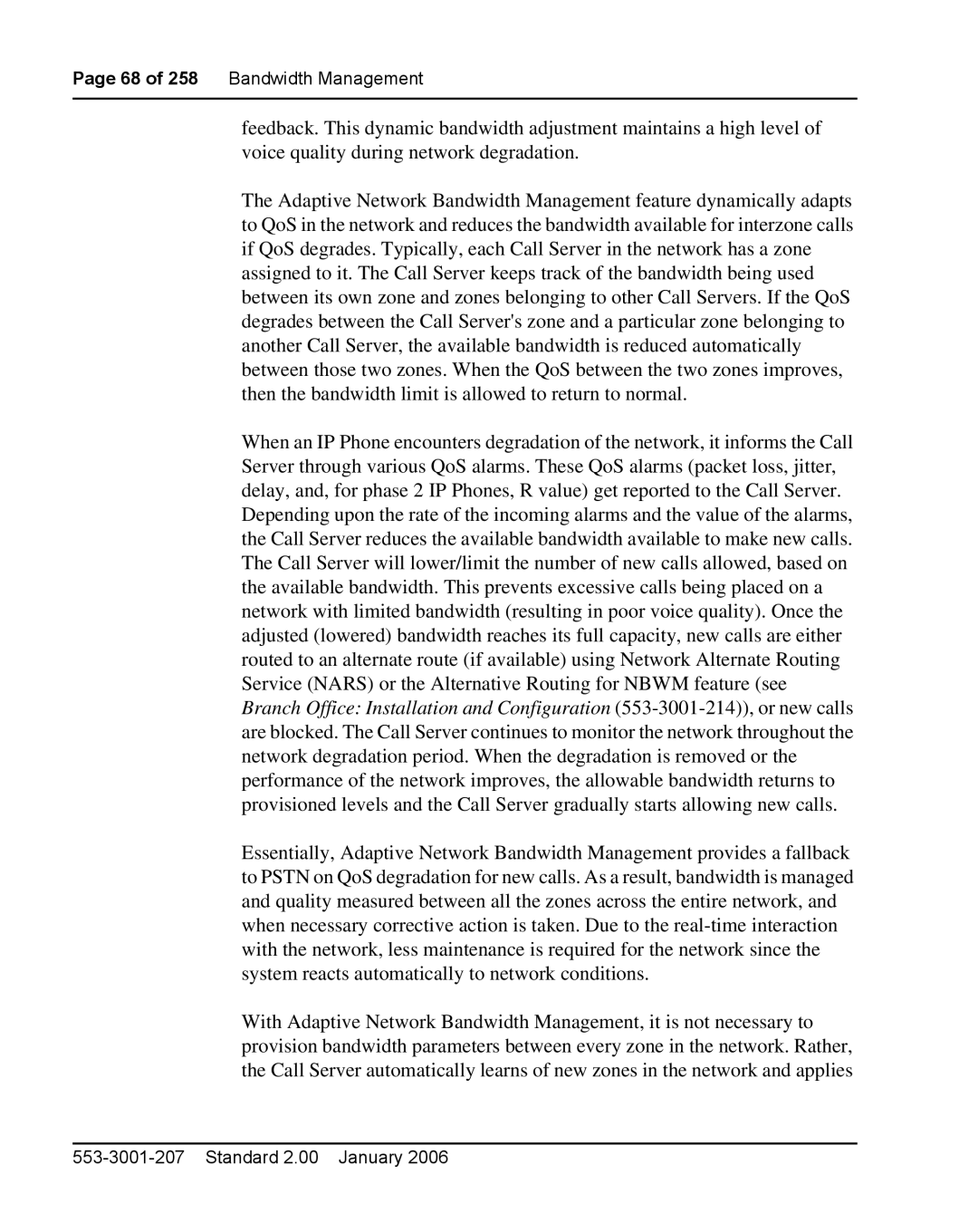
Page 68 of 258 Bandwidth Management
feedback. This dynamic bandwidth adjustment maintains a high level of voice quality during network degradation.
The Adaptive Network Bandwidth Management feature dynamically adapts to QoS in the network and reduces the bandwidth available for interzone calls if QoS degrades. Typically, each Call Server in the network has a zone assigned to it. The Call Server keeps track of the bandwidth being used between its own zone and zones belonging to other Call Servers. If the QoS degrades between the Call Server's zone and a particular zone belonging to another Call Server, the available bandwidth is reduced automatically between those two zones. When the QoS between the two zones improves, then the bandwidth limit is allowed to return to normal.
When an IP Phone encounters degradation of the network, it informs the Call Server through various QoS alarms. These QoS alarms (packet loss, jitter, delay, and, for phase 2 IP Phones, R value) get reported to the Call Server. Depending upon the rate of the incoming alarms and the value of the alarms, the Call Server reduces the available bandwidth available to make new calls. The Call Server will lower/limit the number of new calls allowed, based on the available bandwidth. This prevents excessive calls being placed on a network with limited bandwidth (resulting in poor voice quality). Once the adjusted (lowered) bandwidth reaches its full capacity, new calls are either routed to an alternate route (if available) using Network Alternate Routing Service (NARS) or the Alternative Routing for NBWM feature (see Branch Office: Installation and Configuration
Essentially, Adaptive Network Bandwidth Management provides a fallback to PSTN on QoS degradation for new calls. As a result, bandwidth is managed and quality measured between all the zones across the entire network, and when necessary corrective action is taken. Due to the
With Adaptive Network Bandwidth Management, it is not necessary to provision bandwidth parameters between every zone in the network. Rather, the Call Server automatically learns of new zones in the network and applies
